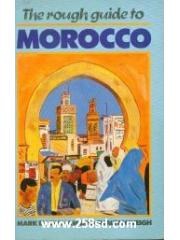

具体描述
Book Description INTRODUCTION For Westerners, Morocco holds an immediate and enduring fascination. Though just an hour's ride on the ferry from Spain, it seems at once very far from Europe, with a culture - Islamic and deeply traditional - that is almost wholly unfamiliar. Throughout the country, despite the years of French and Spanish colonial rule and the presence of modern and cosmopolitan cities like Rabat or Casablanca, a more distant past constantly makes its presence felt. Fes, perhaps the most beautiful of all Arab cities, maintains a life still rooted in medieval times, when a Moroccan empire stretched from Senegal to northern Spain; while in the mountains of the Atlas and the Rif, it is still possible to draw up tribal maps of the Berber population. As a backdrop to all this, the country's physical make-up is also extraordinary: from a Mediterranean coast, through four mountain ranges, to the empty sand and scrub of the Sahara. All of which makes travel here an intense and rewarding - if not always easy - experience. Certainly, there can be problems in coming to terms with your privileged position as tourist in a nation that, for the most part, would regard such activities as those of another world. And the northern cities especially have a reputation for hustlers: self-appointed guides whose eagerness to offer their services - and whose attitude to tourists as being a justifiable source of income (and to women as something much worse) - can be hard to deal with. If you find this to be too much of a struggle, then it would probably be better to keep to low-key resorts like Essaouira or Asilah, or to the more cosmopolitan holiday destination of Agadir, built very much in the image of its Spanish counterparts, or even a packaged sightseeing tour. But you'd miss a lot that way. Morocco is at its best well away from such trappings. A week's hiking in the Atlas; a journey through the southern oases or into the pre-Sahara; or leisured strolls around Tangier, Fes or Marrakesh - once you adapt to a different way of life, all your time will be well spent. And it is difficult for any traveller to go for long without running into Morocco's equally powerful tradition of hospitality, generosity and openness. This is a country people return to again and again. Regions Geographically, the country divides into five basic zones: the coast, Mediterranean and Atlantic; the great cities of the plains; the Rif and Atlas mountains; and the oases and desert of the pre- and fully-fledged Sahara. With two or three weeks - even two or three months - you can't expect to cover all of this, though it's easy enough (and highly recommended) to take in something of each aspect. You are unlikely to miss the mountains, in any case. The three ranges of the Atlas, with the Rif a kind of extension in the north, cut right across the interior - physical and historical barriers, and inhabited for the most part by the indigenous Moroccan Berbers. Contrary to general preconceptions, it is actually the Berbers who make up most of the population; only around ten percent of Moroccans are "pure" Arabs, although with the shift to the industrialized cities, such distinctions are becoming less and less significant. A more current distinction, perhaps, is the legacy of Morocco's colonial occupation over the fifty-odd years before it reasserted its independence in 1956. The colonized country was divided into Spanish and French zones - the former contained Tetouan and the Rif, the Mediterranean and the northern Atlantic coasts, and parts of the Western Sahara; the latter comprised the plains and the main cities (Fes, Marrakesh, Casablanca and Rabat), as well as the Atlas. It was the French, who ruled their "protectorate" more closely, who had the most lasting effect on Moroccan culture, Europeanizing the cities to a strong degree and firmly imposing their language, which is spoken today by all educated Moroccans (after Moroccan Arabic or the three local Berber languages). --This text refers to an out of print or unavailable edition of this title. Excerpted from The Rough Guide To Morocco (Rough Guide Morocco) by Rough Guides. Copyright © 2004. Reprinted by permission. All rights reserved. When to go As far as the climate goes, it would be better to visit the south – or at least the desert routes – outside midsummer, when for most of the day it’s far too hot for casual exploration, especially if you’re dependent on public transport. But July and August, the hottest months, can be wonderful on the coast, while in the mountains there are no set rules. Spring, which comes late by European standards (around April to May), is perhaps the best overall time, with a summer climate in the south and in the mountains, as well as on the Mediterranean and Atlantic coasts. Winter can be perfect by day in the south, though be warned that desert nights can get very cold – a major consideration if you’re staying in the cheaper hotels, which rarely have heating. If you’re planning to hike in the mountains, it’s best to keep to the months from April to October unless you have some experience of snow conditions. Weather conditions apart, the Islamic religious calendar and its related festivals will have the most seasonal effect on your travel. The most important factor is Ramadan, the month of daytime fasting; this can be a problem for transport, and especially hiking, though the festive evenings do much to compensate. See p.65 of the Basics section for details of its timing, as well as that of other festivals. --This text refers to the Paperback edition.
作者简介
目录信息
读后感
评分
评分
评分
评分
用户评价
相关图书
本站所有内容均为互联网搜索引擎提供的公开搜索信息,本站不存储任何数据与内容,任何内容与数据均与本站无关,如有需要请联系相关搜索引擎包括但不限于百度,google,bing,sogou 等
© 2025 book.wenda123.org All Rights Reserved. 图书目录大全 版权所有




















